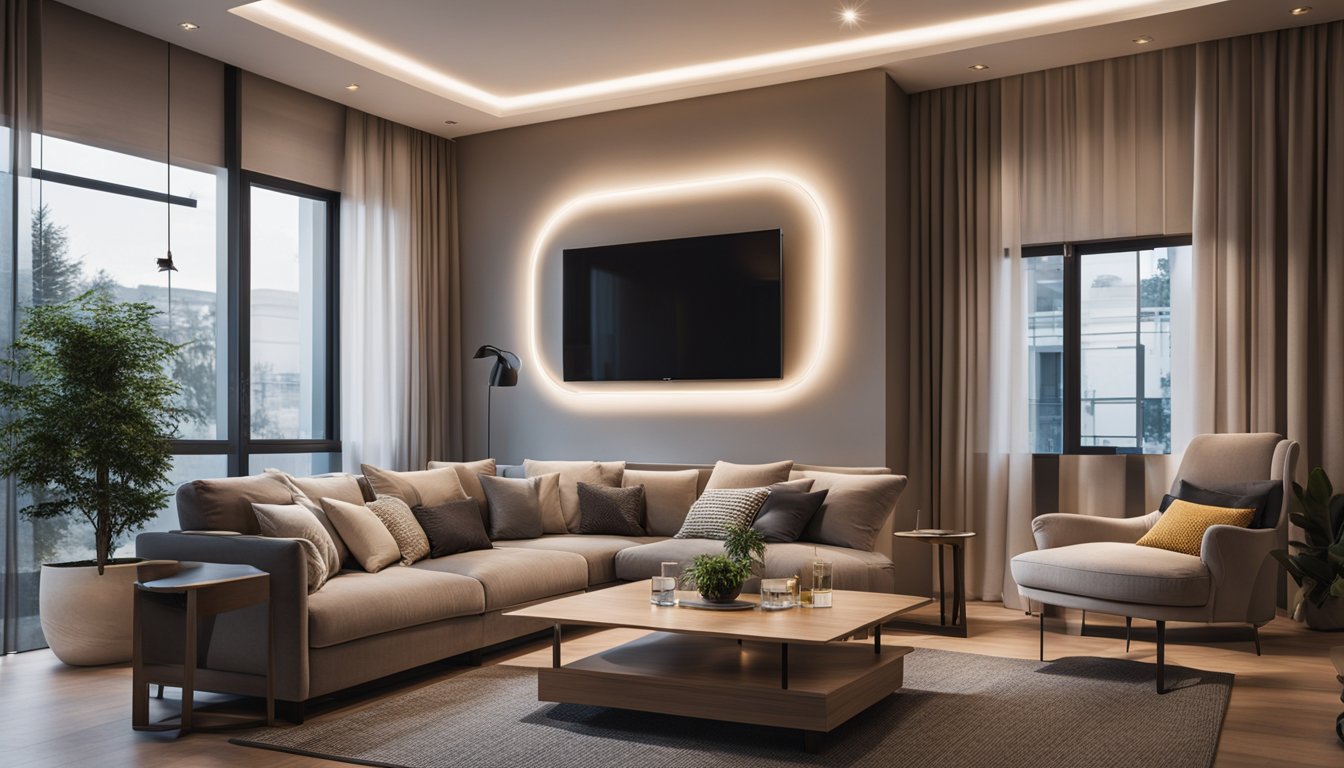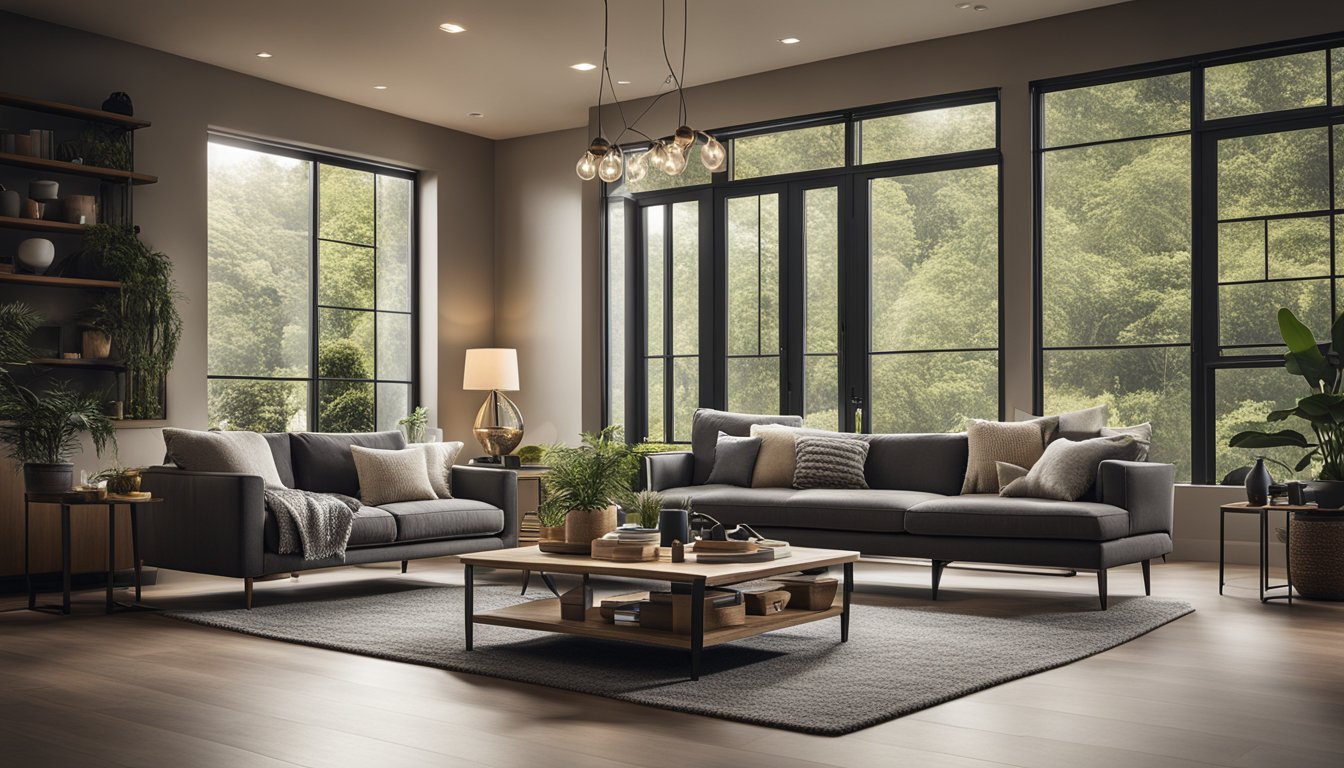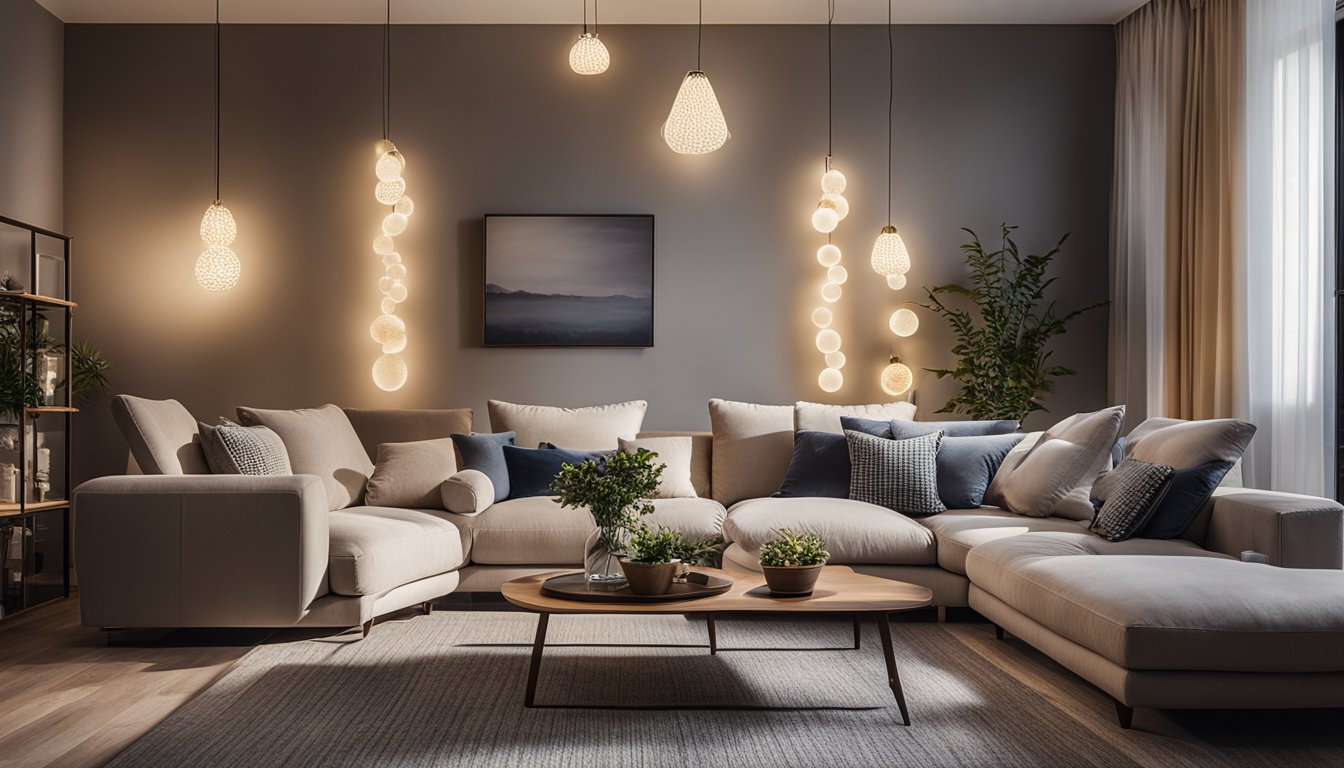Late updated: 16 Aug 2024 15:08
Written by: Daniel Harper
Energy-Efficient Lighting Solutions For Your Home: Bright Ideas for Sustainability
Thinking about switching to energy-efficient lighting solutions for your home might seem like a daunting task, but it's simpler than you think. With the potential to save money on electricity bills and reduce energy consumption, the benefits are substantial. By replacing traditional bulbs with LEDs, households can save up to £75 a year on electricity bills.

Energy-efficient lighting comes in various forms, with LEDs and CFLs being the most common options available. Each type offers unique benefits, but LEDs stand out for their adaptability and efficiency. Not only do they consume less power, but their longer lifespan also means fewer replacements are needed, effectively cutting down on waste.
As we explore the various options available, consider how these small changes can lead to significant long-term savings and a greener planet. Whether it's the living room, kitchen, or any other space, the right lighting solution can enhance the ambience and functionality while promoting a sustainable lifestyle.
Key Takeaways
- Switching to LED bulbs can save you up to £75 a year.
- LEDs and CFLs are common energy-efficient lighting options.
- Energy-efficient lighting supports a more sustainable lifestyle.
Understanding Energy-Efficient Lighting
To optimise home lighting while minimising electricity bills and energy consumption, we should explore different types of energy-efficient bulbs, understand their brightness, and match them to our lighting needs.
The Basics of Lighting and Efficiency
Energy efficiency in lighting means providing the desired level of light using less energy. Traditional incandescent bulbs consume a lot of energy, converting most of it into heat rather than light. This leads to higher electricity bills. In contrast, energy-efficient bulbs like LEDs, CFLs, and halogen bulbs are designed to provide the same brightness while using less power.
Lumens measure brightness, while wattage indicates energy use. A higher lumen per watt ratio means greater efficiency. LEDs are known for their high lumen output and low energy consumption. Understanding these basics helps us make informed choices and reduce energy use substantially.
Types of Energy-Efficient Bulbs
There are several options when it comes to energy-efficient lighting. LED bulbs are the most popular, known for their exceptional efficiency and long lifespan. They use up to 75% less energy than incandescent bulbs and can last up to 25 times longer.
Compact Fluorescent Lamps (CFLs) are another option. They use about 70% less energy compared to incandescent bulbs and typically last 10 times longer. Halogen bulbs, while more efficient than traditional incandescents, are less effective than LEDs and CFLs. They use slightly less energy but offer a similar quality of light.
Each type has its advantages and drawbacks, but overall, LEDs stand out due to their efficiency and versatility.
Comparing Brightness and Colour Temperature
Brightness in bulbs is measured in lumens. We need fewer watts to achieve the same brightness with energy-efficient bulbs. For instance, a 9-watt LED bulb can produce the same lumens as a 60-watt incandescent bulb.
Colour temperature is measured in Kelvin (K) and determines the warmth or coolness of light. Lower values (2,700K-3,000K) indicate warm white light, ideal for living spaces. Higher values (5,000K-6,500K) produce cool white light, suitable for task lighting and offices.
Choosing the right brightness and colour temperature can enhance the ambiance and functional lighting needs of our home.
Implementing Energy-Efficient Solutions at Home

To achieve significant energy savings and contribute to sustainability, utilising smart, energy-efficient lighting solutions in your home is essential. These technologies range from advanced lighting systems to thoughtful design strategies, focusing on reducing carbon emissions and increasing cost savings.
Integrated Lighting Technologies
Incorporating Integrated Lighting Technologies helps in optimising energy consumption. Smart lighting systems, such as those with motion sensors, timers, and dimmers, ensure lights are only on when needed. We can also use Energy Star certified bulbs and fixtures to further enhance efficiency.
LEDs are a popular choice due to their durability, longevity, and lower voltage requirements. They are available in various sizes and shapes, fitting almost any lighting need, and their versatility can create ambient, task, and accent lighting according to our requirements.
Optimising Home Lighting Design
An efficient home lighting design requires a mix of lighting solutions. We can start with recessed lighting for ambient lighting to illuminate large areas uniformly. Task lighting should be incorporated where direct light is essential, such as over kitchen counters or study areas.
Using transparent shades or minimal fittings allows more light to pass through, enhancing efficiency. Accent lighting can highlight architectural features or artworks, providing a significant visual impact without excessive energy use. Using dimmable fixtures lets us adjust the light levels as needed, leading to more effective energy use.
Exterior and Speciality Lighting Considerations
Outdoor and speciality lighting need due consideration as well. Outdoor lighting solutions like LED flood lights and pendant lights should be chosen for their energy efficiency and durability. These lights can include features like motion sensors and timers, ensuring they are only active when necessary.
For spaces requiring specific lighting, such as garden paths or security lighting, it's crucial to select bulbs with the appropriate beam angle and voltage settings, ensuring sufficient illumination while minimising energy use. Prioritising outdoor fixtures rated for exterior use increases longevity and reduces maintenance costs.
By thoughtfully integrating these energy-efficient solutions in our homes, we can achieve substantial cost savings and contribute to a more sustainable environment.
Frequently Asked Questions

Exploring energy-efficient lighting for your home involves understanding various options, comparing costs, and knowing key facts about different types of bulbs. This section answers common questions to help you make informed decisions.
What are the best energy-saving light bulbs available for residential use?
The top choices for energy-saving light bulbs are LEDs, CFLs, and halogen incandescents. LEDs are particularly popular due to their long lifespan and low energy consumption. They provide the same brightness as traditional bulbs but with significantly reduced wattage. CFLs are also efficient, but they contain mercury, which requires careful disposal.
How do costs and savings compare between LED lights and traditional incandescent bulbs?
LED lights have a higher upfront cost compared to incandescent bulbs. However, they are more energy-efficient and have a longer lifespan. For instance, a 10-watt LED can replace a 60-watt incandescent, reducing your electricity costs by around 75%. Over time, the savings on your energy bills can offset the initial expense of LEDs.
Can LED lighting be used in any fixture, and are there any drawbacks?
LED lights are versatile and can be used in most fixtures, from table lamps to recessed lighting. Some older dimmer switches may not be compatible with LEDs, requiring an upgrade. Additionally, while rare, some people find the light quality or colour temperature of LEDs less preferable than incandescent bulbs.
What are the key facts one should know about energy-saving light bulbs?
Energy-efficient bulbs like LEDs and CFLs use significantly less power and last much longer than traditional incandescent bulbs. They are available in various shades of white, from warm to cool, suiting different preferences. Choosing the right bulb often depends on both the lumens (brightness) and colour temperature.
How significant is the month-to-month savings when switching to LED lights?
Switching to LED lights can result in noticeable monthly savings on your electricity bill. On average, replacing a home’s lighting system with LEDs can reduce lighting costs by about 80%. For example, using a 10-watt LED instead of a 60-watt incandescent can save approximately £80 per year for an average household.
Which light fixtures offer the highest energy efficiency for domestic settings?
Recessed lighting fixtures with integrated LED bulbs tend to offer the highest energy efficiency. These fixtures are designed to maximise light output while minimising energy consumption. Additionally, LED strip lights and under-cabinet lighting are excellent for targeted illumination while keeping energy use low.
